There’s something undeniably charming about sheep—those gentle, woolly creatures grazing peacefully in a pasture... Maybe you dream of producing your own fiber, keeping pastureland in check, or even raising your own lamb for the freezer. Whatever your reason, bringing sheep onto your homestead is an exciting step—but it’s not as simple as buying a few lambs and calling it a day.
Sheep are hardy, but they’re not maintenance-free. They have their own quirks, needs, and unexpected challenges that can catch beginners off guard. Which breeds suit your climate and goals? How will you keep them safe from predators? What about nutrition and common health issues?
Before you take the plunge into shepherding, let’s go over the key things “ewe” should know about raising sheep—so you can set yourself (and your future flock) up for success.
Welcome to the “The Homesteaders’ Handbook”! If you’re new here, I invite you to check out the Course Entry-Portal to learn what this is. Or view my About Page to find out who I am and why I am doing this. Or just dive right in! At “Runamuk Acres” you’ll find the recantings of one lady-farmer and tree-hugging activist from the western mountains of Maine. #foodieswanted
In This Post:
How I Became a Shepherdess
Benefits of Raising Sheep
Choosing the Right Breed
Housing & Fencing
Equipment
Feeding & Nutrition
Basic Health Care
Illness & Disease
The A, B, C’s of Breeding & Lambing
Handling & Behavior
Things “Ewe” Should Know About Raising Sheep
The Bottom Line
Actionable Tips
How I Became a Shepherdess
For me, it all began shortly after I bought my farm—with the gift of a pair of retirement-age Romney sheep.
Unexpectedly, I found myself drawn to their sweet temperament and I quickly developed an interest in using sheep as a means of soil regeneration. Though the property I’d purchased included a 10-acre field—formerly an air strip—the forage was sparse due to poor soil conditions. Practicing rotational grazing with my sheep has made a profound impact on both field and farmer.
For more on that backstory, check out these other posts I’ve written:
➡️No One Warned Me About Sheep
Benefits of Raising Sheep
A small flock of sheep make a great addition to any homestead or small farm. Not only do they provide multiple products like meat, wool and milk, they’re also an excellent means of managing lands by controlling weeds and improving soil health.
Relatively low-maintenance, sheep are more economical to keep, increasing profitability and sustainability. Their smaller size also makes them easier to handle, making sheep a good entry-point for newbie-homesteaders and wannabe-farmers who wish to work with livestock.
Choosing the Right Breed
Going back to our first lesson in livestock, choosing the right breed will depend upon your goals, climate and available resources. You will have assessed those factors and your notes will help you in choosing the right breed for your homestead or farm.
THINGS TO CONSIDER:
Purpose: Do you want sheep for meat, wool, or dairy? Even if you’re after land management, likely you’ll want to get some kind of return from your investment.
Climate & Hardiness: Some breeds perform better in certain climates and it’s important to do your homework to ensure you’re bringing home animals best-suited to your particular conditions.
Parasite & Disease Resistance: Some breeds have a natural resistance to parasites and diseases, reducing vet costs.
Grazing & Land Management: Again, some breeds perform better in certain conditions than others. For example, the babydoll and the shetland are compact and efficient grazers, ideal for small acreage. While the Scottish blackface and the Icelandic excel on rougher terrain. (NOTE: If you’re fighting brambles and thick undergrowth, better to go with goats. Sheep are grazers, while goats are browsers.)
Temperament & Ease of Handling: You will find the temperament of sheep will vary from one breed to the next, and even within the breed there will be some variation from one individual to the next. That being said, some breeds are naturally more docile and easier to work with, while more independent breeds like the Jacob and the Icelandic may require more handling and experience.
Wool vs. Hair Sheep: Wool sheep need annual or twice-annual shearing, while hair sheep shed naturally and require less maintenance.
Lambing & Reproduction: Some of the more domesticated breeds have become very dependent on man, while others retain much of their natural instincts, making for better, more independent mothers with an increased survival rate for lambs. Some breeds, like my Finnsheep, have multiple lambs per birth, allowing you to rapidly increase flock size.
➡️For more information on specific breeds of sheep, I recommend this resource from Livestock of the World: All Sheep Breeds.

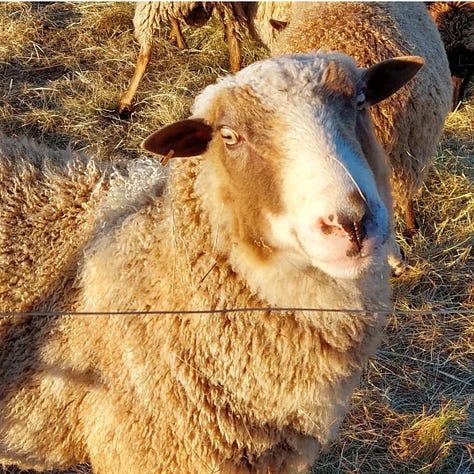

Housing & Fencing
Regardless of your goals, your sheep will need housing and fencing to protect them from the elements and predators. Those needs will be dictated by climate, season(s) of lambing, and management practices of the shepherd. In addition, you will need facilities where you can store hay, grain, bedding and equipment.
SHELTER NEEDS
Windbreaks, barns or 3-sided shelters work well, but you can also use a pop-up garage or hoop-house. Or even repurpose old dairy, swine or poultry barns to suit your needs.
Whatever the structure, it should provide a space out of wind and weather. It should be well-drained and ventilated, as well as easily accessible for deliveries and manure-removal. You may also want to consider installation of water and electricity to permanent structures.
Non-permanent structures, such as moveable shelters used in rotational grazing situations, should be light enough to be hauled around, while heavy enough not to get blown away with the first big wind. You’ll want them rugged enough to withstand the abuse of the sheep, too, as they will invariably rub and scratch themselves against the shelter.
SPACE REQUIREMENTS
Sheep are most commonly kept in “Open-Shed Housing”—a three-sided structure or barn open to pasture or yard. Dirt lots and confinement housing have different requirements, but as we are largely homestead-minded here, the numbers I’ve listed below are geared toward small-scale production and the open-shed housing situation.
Space Requirements in Square Feet:
Bred Ewe: 8
Ewe with Lambs: 12
Ram: 8
Feeder Lamb: 6

FENCING
One of the biggest expenses on any farm is fencing. Dictated by your wallet, the terrain of your property and the unique goals you have for your homestead, you may need several types of fencing to control and protect your flock.
NOTE: We’ll take an in-depth look at electric fencing in a guest post I’m writing for The Backyard Farming Connection which will be published later in May. For now here’s a brief overview to wet your whistle…
Terms to Know
Perimeter: Installed around the property boundary, the perimeter fence is the first line of defense against predators. Designed of high-quality materials and intended to last a long time.
Interior: Used to sub-divide fields in to smaller areas for grazing, interior fences can be constructed from permanent, semi-permanent, or temporary fencing materials.
Permanent: Think carefully before sinking those wooded posts, because this fence is going to be there a long time!
Semi-Permanent: Refers to fences made with T-posts and stock panels. They’re sturdy, but moveable with a bit of effort.
Temporary: These are your net-fences, or pens made with stock-panels that are easily put up or taken down.
High-Tensile: Miles and miles of 12 and a half gauge wire powered by an electric charger. High-tensile fences are fairly easy to construct, and cost less than other types of fencing.
Net Fencing: Electric-net fences are lightweight and easy to install, providing a formidable mental and physical barrier constructed of polywires and plastic twines.
Woven Wire: Horizontal lines of smooth wire held apart by vertical wires called "stays”, woven wire is the traditional fence for sheep, very effective but more expensive to establish.
Charger: Whether it’s solar powered or AC, the charger is the beating heart of your electric-fence system. It rhythmically sends pulses through your fence to keep your sheep contained, while repelling predators.
Grounding: Poor grounding is the leading cause of electric fence failures. An electric fence must be properly grounded for the pulse to complete its circuit and give the animal an effective shock.
Whatever system you decide to go with, you’ll want your fences at least 36-inches tall, with a minimum of 5-strands, though 6 and 7 are not uncommon.
➡️For more details on housing sheep, check out this resource from Sheep101.
Equipment
Aside from the housing and fencing, there are a few things you’ll want to have on hand to aid you in tending your flock:
Hay Manager - Sheep are notorious wasters of hay. Minimize waste with a hay manger.
Water Trough & Buckets - You never seem to have enough 5-gallon buckets on the farm!
Grain Trough - Something to serve the grain in for feeding. I just use an old sled.
Medical Supplies - Syringes for oral and injectable medications (available right at Tractor Supply), thermometer, bulb syringe, iodine, basic first aid supplies, etc.
Hoof Pick and Trimmers - For obvious reasons.
Electric Shears - Even if you hire someone to shear your sheep, you may want a pair of wool shears available.
Halters - Occasionally, you may need to tie up a sheep to be able to treat the animal.
Security Cameras - I love these during lambing season!
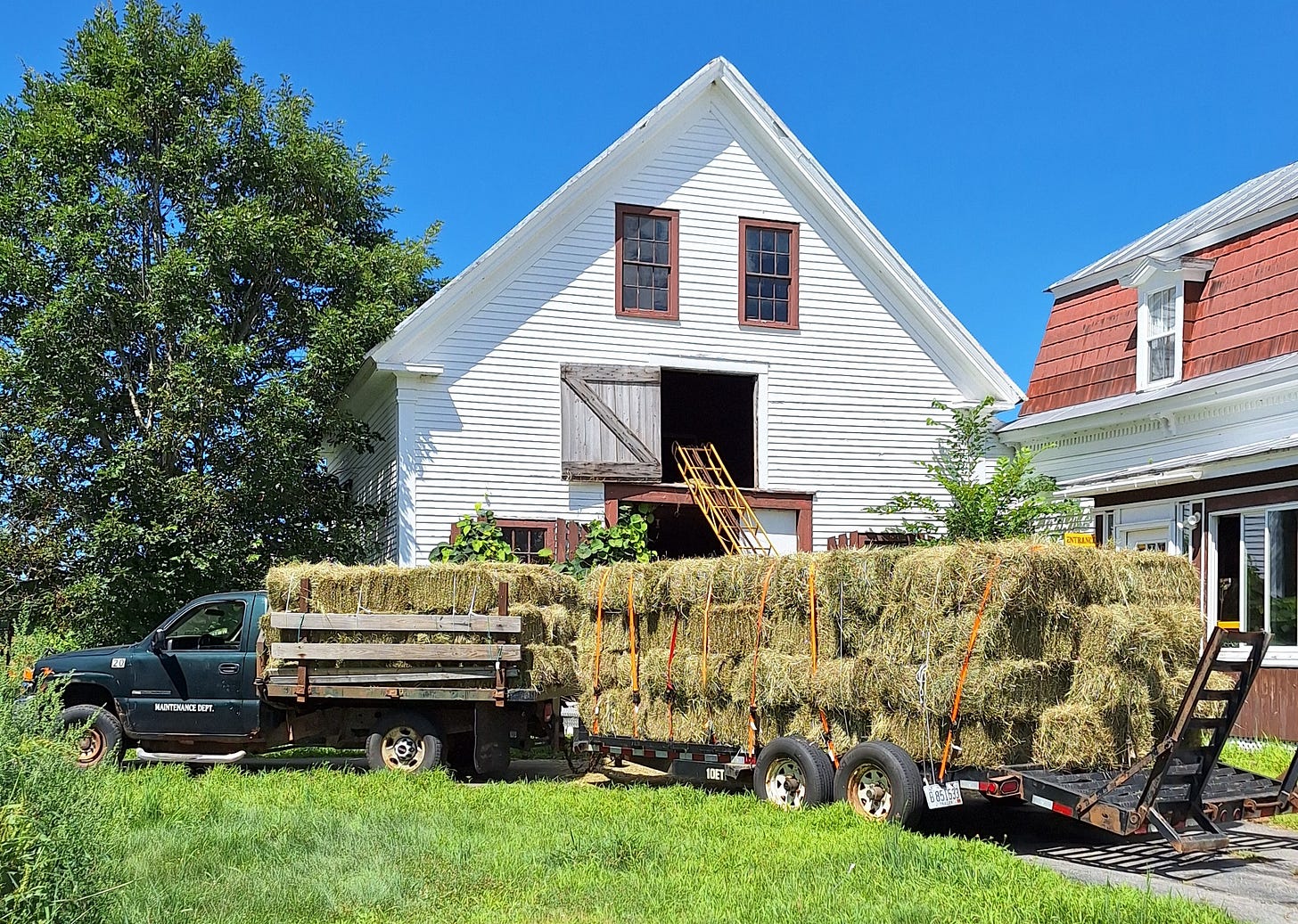
Feeding & Nutrition
Care and attention to feeding and nutrition is one of the best ways to ensure the health of your flock. Sheep require energy, protein, vitamins, minerals, fiber and water. There are a variety of feed-stuffs you can use to meet these nutritional requirements.
FORAGE
The biggest part of their diet is made up of forage: pasture and browse, hay or silage. Keep in mind that not all forage is created equal. Your grazing areas—like mine—may be lacking in diversity or the soil may be deficient and those deficiencies will carry over to your sheep. I make up for that not just by offering access to supplemental minerals, but also by purchasing a high quality horse hay to sustain my flock through the long Maine winters. At least 1 pound per head per day—more for pregnant or lactating ewes.
PROTEIN
The most expensive part of their diet will be the protein source. This is required especially for young lambs who are growing and building muscle, and also for lactating ewes producing milk proteins. I like to use alfalfa pellets, but you can also use soybean meal or soybeans, sunflower meal or cottonseed meal.
MINERALS
Experts have classified 16 minerals as nutritionally essential to a sheep’s diet. I’m not going to list them here, but I recommend you invest in a mineral mix specifically formulated for sheep and offer that free choice to your flock. We use a mix from Blue Seal that I pick up at my local Farmers’ Union. It’s expensive, but lasts a long time, and it really does make a difference in the health and quality of my flock.
A note of caution: You will often see products marketed toward sheep and goats together. When it comes to feed, supplements and medications, it’s important to remember that sheep and goats have very different nutritional requirements. Goats are naturally deficient in copper and many feed and mineral mixes meant for goats have added copper in them, which can be detrimental to sheep. As a personal rule, I seek out products meant only for sheep to ensure the health and well-being of my flock and I urge you to do the same.
SALT
This one surprised me when I got into sheep-keeping, but salt is essential for the processing of minerals and nutrients within the body. The Blue Seal mineral mix contains enough salt to satisfy, but you can also offer a supplement or a salt-block.
BAKING SODA
It is imperative to always have baking soda available to your flock. When the digestive microbes of ruminant animals become imbalanced it can lead to bloating that can become life-threatening. Sodium Bicarbonate (the technical term for every day baking soda) buffers the rumen and keep pH levels stable. You can certainly use baking soda right from the pantry, but I recommend purchasing a bulk quantity at your local farmers’ union as it will save you money in the long run.
WATER
Often the most neglected aspect of feeding sheep, water participates in nearly all body functions and is the most important "nutrient". Your sheep will consume anywhere from ½ to 4 gallons of water per day, depending upon its physiological state and the environmental conditions. There should always be plenty of clean, fresh water available to them.
Basic Health Care
Once you have your sheep, there are some basic health care tasks which need to be performed annually or bi-annually, depending.
Shearing: For most flocks, shearing is an annual project and a good shearer is worth every penny.
Hooves: I can’t speak for all shearers, but mine will also trim hooves while she has a sheep incapacitated (for an additional fee, of course). Then, during the in between times, I will trim hooves myself during our pre-lambing maintenance session, or as needed.
Parasites: Sheep are prone to a number of different parasites, but the more common ones are intestinal worms (picked up on the grasses they eat on pasture) and lice. I use an oral de-wormer which has the added bonus of curing certain types of lice and a host of other parasites all at the same time. Then I’ll use a topical treatment of permethrin to repel the other type of lice. This I’ll do mid-winter, when pest pressure is high because of the sheep’s thick wool at that time of year, and again after they’ve been shorn just before I turn them out onto pasture for the summer. (Don’t worry! Lice are species specific and sheep-lice cannot live on people, so there’s no chance of catching lice from your flock.)
Selenium: This may not be the case where you are, but Maine’s soils are naturally lacking in selenium, so I give an oral selenium supplement to each of my sheep annually.
CDT Vaccinations: The CDT vaccine is the only universally recommended vaccine by veterinarians for goats and sheep. Without it, your sheep run the risk of succumbing to bacterial issues that can lead to enterotoxemia or tetanus—or even death.
➡️For more on this, check out “What is the CDT Vaccine and Why Is IT Important for Sheep and Goats”.
Illness & Disease
Learning how to recognize signs of illness and disease in your sheep will offer you a better chance of saving them should the need arise. Generally speaking, sick sheep will be listless and set apart from the group. They may have gone off their feed, lost weight or be experiencing wool slippage.
By spending time with your sheep every day and “having eyes on them”—as I like to call it—you will come to know your flock on a more intimate level. You will learn not only their personalities, but also their behaviors. This will aid you in discerning the subtle signs of illness that might present themselves, allowing you to take corrective action sooner.
I’m not going to list them here, but it is part of your homework should be to review the link below to learn more about various diseases and afflictions to sheep. I also encourage you to read about FAMACHA—an essential tool in your arsenal for keeping your flock healthy in order to prevent illness.
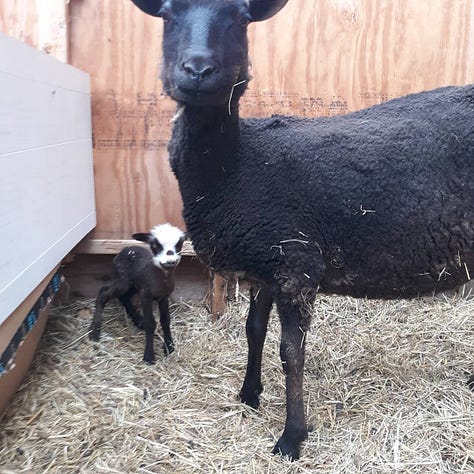
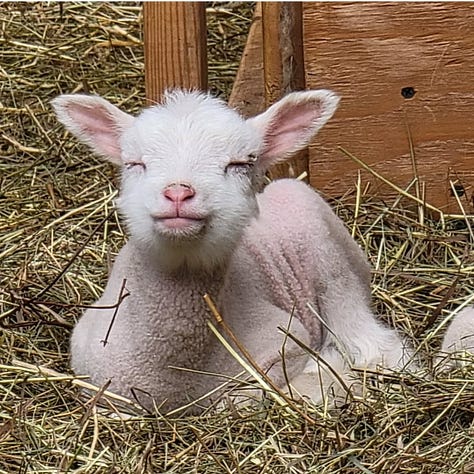
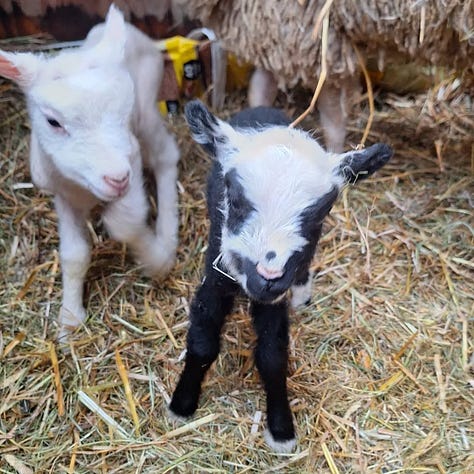

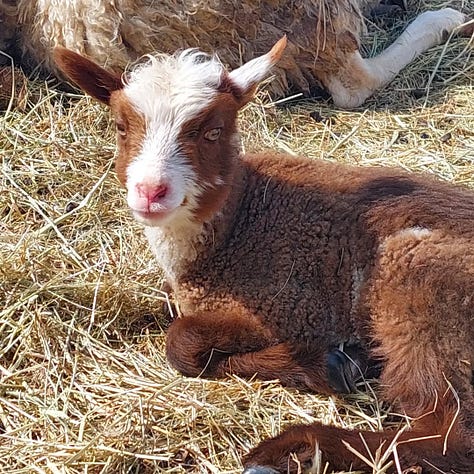
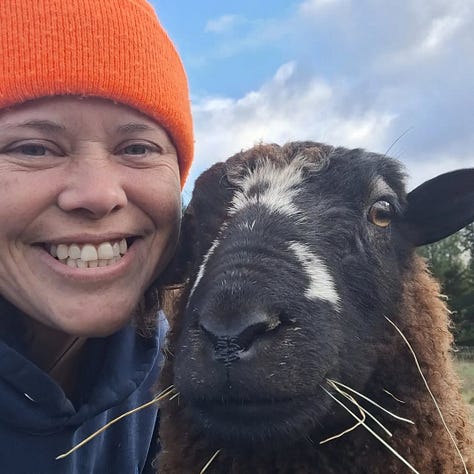
The A, B, C’s of Breeding & Lambing
Lambing season can be a time of great joy, as well as a time of deep sorrow on the homestead or farm. This is just a quick over-view and I encourage you to dig deeper into the topic before you take on the challenge of bringing your own baby lambs into the world. Even then, no amount of studying can prepare you for the stress and fear you’ll feel when things inevitably go wrong. In many cases, the best education is experience itself.
BREEDING SEASON
In preparing for breeding season, you’ll first want to ensure your stock is in top condition. Generally, having weaned the flock off of grain during the summer months, I’ll reintroduce it later in the fall. This serves to flush the sheep with nutrients, priming their bodies for the coming rutting season.
Next, I’ll decide when I’d like my lambs to come into the world and count back from there. The typical gestation period of a sheep is 147 days, though the length of time ewes carry their lambs before delivery can fall into a range of 138-159 days in most cases.
Introduce your stud to your chosen ewes on the appointed day and allow nature to take it’s course. You should figure on leaving him with the ladies for a good 45 days to ensure breeding occurs.
GESTATION
Once the deed is done, there’s not much to do but wait out the gestation period. Good quality hay, a daily grain allowance, plenty of water and access to their usual dietary supplements are all that is needed until the last trimester.
At that point I like to step it up…
Your CDT vaccinations, deworming and de-lousing, hoof-trimming and any other maintenance should be performed 6-8 weeks ahead of lambing.
I like to add alfalfa pellets to their morning grain rations at this stage, too. Alfalfa is rich in nutrients and protein and helps nourish both mamma and babies during these last few weeks of rapid fetal growth. Then, as birthing draws near, I’ll add whole corn to their diet also, so that mammas are producing a rich milk to feed those newborns when they arrive.
LAMBING SEASON
Do yourself a favor and prepare for lambing season ahead of time by collecting all of the supplies you will need into a bin to have at the ready. The most-used items in my own lambing bin are towels, a bulb syringe and iodine, though I have a number of other tools stashed there as well.
The best-case scenario is you wake up to find your ewe has successfully delivered all of her babies, cleaned them up and each lamb is nursing in turn, robust and thriving.
Personally, I’ve never had to interfere in a birthing or take any drastic measures on behalf of the mother and I’m thankful for it. However, I have had to come to the aid of a number of newborn lambs over the years.
In most cases, if you can get the lamb to eat, they will thrive—regardless of whether that sustenance comes from mamma or a bottle. Which is why I like to be on hand during the first hours of a lamb’s life.
It’s important to verify the lamb is nursing—that he or she receives the all-important colostrum to fortify their immune system. Feeding kickstarts the bodily processes which not only fill the tummy, but provides the energy needed to maintain body temperature.
Once a lamb is chilled, those processes slow and lambs can fail frighteningly quickly.
Most lambs instinctually locate mum’s teats, but some need help. In those instances, don’t be afraid to gently pry the lambs’ mouth open to place mum’s teat into it’s mouth. Typically, a taste is all that’s required to trigger that sucking reflex and then it’s game-on.
Sometimes lambs arrive to small and weak to either suckle or compete against their siblings. In these cases, a bit of supplementing can help the runt bulk up, or you may decide it’s best to raise these lambs as bottle-babies.
Occasionally you may have a ewe take exception to a lamb and reject them entirely. This can happen for a variety of reasons, including:
The lamb is weak or runty and mom instinctually feels he won’t make it or that she doesn’t have the resources to feed and care for the lamb.
The lamb is sick or malformed and again, mom makes the call to abandon this lamb.
Sometimes a ewe will get a funny thought in her head that a lamb doesn’t smell or look right. I saw this once in a ewe who gave birth to 3 babies—2 of which were white, but the third was black and she rejected the poor thing.
Keep colostrum and milk replacer formula (to save money, you can make your own with ordinary ingredients already on-hand in my kitchen pantry) on hand in the event that you need to supplement or care for any bottle-babies.
Once your babies have all been delivered, it’s up to you to keep them alive. Keeping mom with her lambs together in a lambing jug not only helps them to bond, but also offers protection from the rest of the flock and the opportunity of individual care from their farmer.
Also be sure to baby-proof your sheep-shed to prevent unnecessary deaths. Lambs will drown in the water trough, roll under gates and get squished, get trampled by other members of the flock, or even freeze to death outside when a woolly-coated mamma stands in the night cold because she doesn’t feel the chill in the air.
Maintain diligence in any bottle-feeding regimen, and keep a watchful eye that all your lambs are nursing and thriving. Any lambs who look listless or hunch-backed are not faring well and I would urge you not to take a “wait-and-see” approach.
Nearly 20 percent of lambs die before weaning. Eighty percent of those losses occur during the first 10 days. Good baby lamb care can significantly increase the number of lambs raised by ewes in the flock, so be sure you’re prepared for your lambing season.
Handling & Behavior
Rams have a reputation for being aggressive, yet personally I’ve never seen that kind of behavior in my rams. Perhaps that trait is breed specific and less common in Finnsheep, but I could not say. I tend to think that—to some degree—rams are much like dogs in that it’s all in how you raise them. I am very loving and kind with all of my animals and all of my rams have been sweet-natured and loving right back.
Regardless of temperament, you will need to handle your sheep at one time or another. Understanding sheep behavior is the first step towards developing effective methods for doing so.
Their strong flocking and following behavior tends to make sheep easy to handle (relative to other livestock species). Conversely, sheep will prove difficult if you force them to act in ways that are not natural for them.
I encourage you to read up on handling and behavior before you take the plunge. It will save you significant hassle further down the road:
Things “Ewe” Should Know About Raising Sheep
Now that I’ve opened your eyes to the many things “ewe” should know about raising sheep, I hope you will find as much joy and reward in them as I have.
As a conservation farm for soil and invertebrate insects, the Runamuk sheep play an integral role in facilitating the health and well-being of local wildlife. Do we make much money with our sheep? No. Sales of spring lambs and sales from the fall harvest somewhat off-set the cost of keeping them, but I am in no way breaking even with them.
For me—it’s not about the money.
My mission is wildlife conservation and sheep are the tool by which I am making that happen. It is my contribution to the preservation of nature and the Earth.
Whatever your reason for bringing sheep into your life, I hope this resource points you in the right direction and sets you up for success with your new flock.
The Bottom-Line
Sheep can be a great addition to the homestead or small farm. Being well-prepared will ensure the health and well-being of your new flock, as well as your success as shepherd.
Actionable Tips
Continue studying up on sheep by following the links I’ve laid out for you in this article. Watch YouTube videos about keeping sheep and find a local farm to visit to get an in-person experience with sheep.
Make a list of all the things you will need to get started with sheep and begin picking them up here and there as finances allow.
Thanks for reading! I hope this essay helps you along your homesteading journey. If you have any thoughts or questions, feel free to drop a comment below!
Sending love and good juju to you and yours.






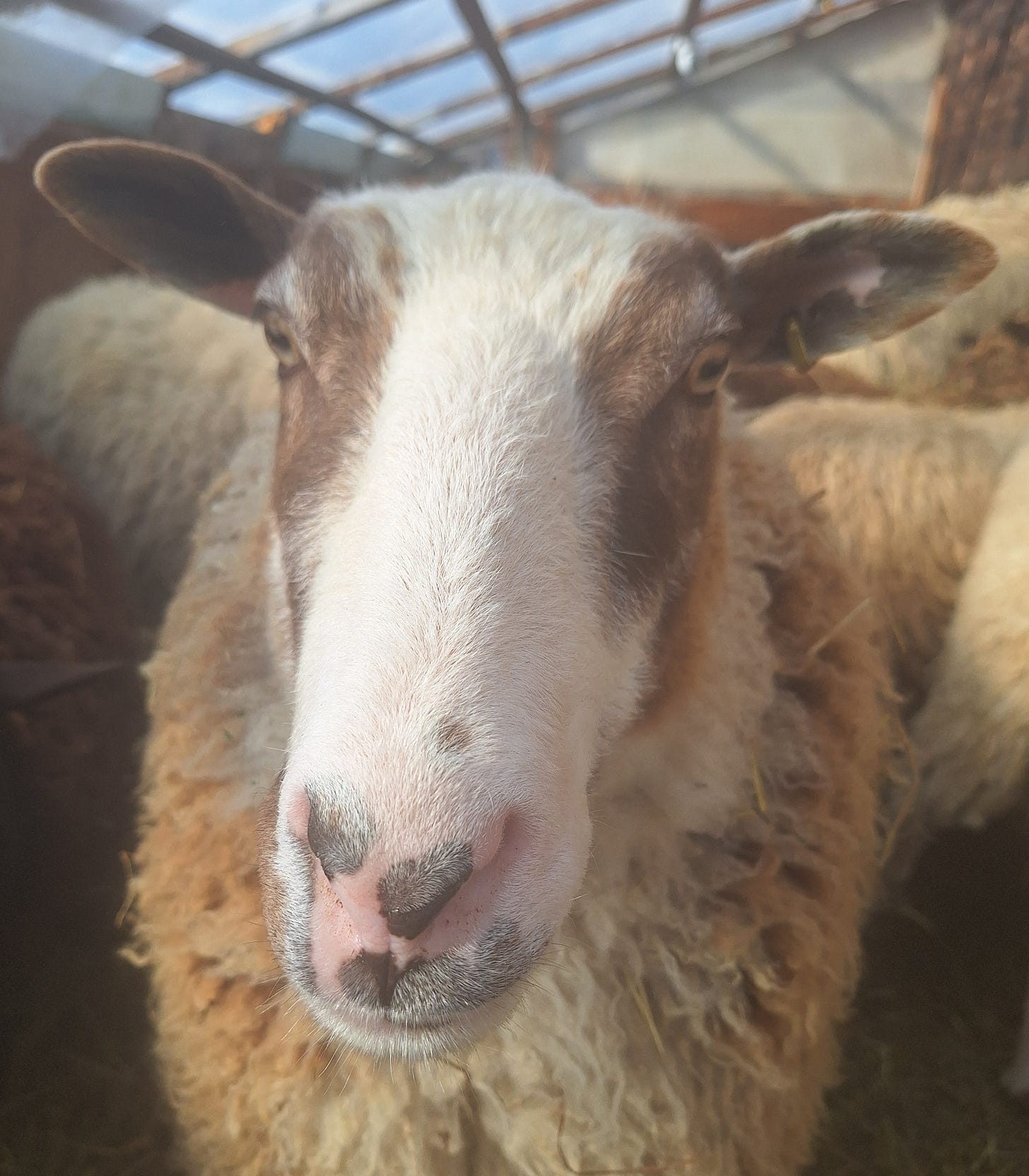
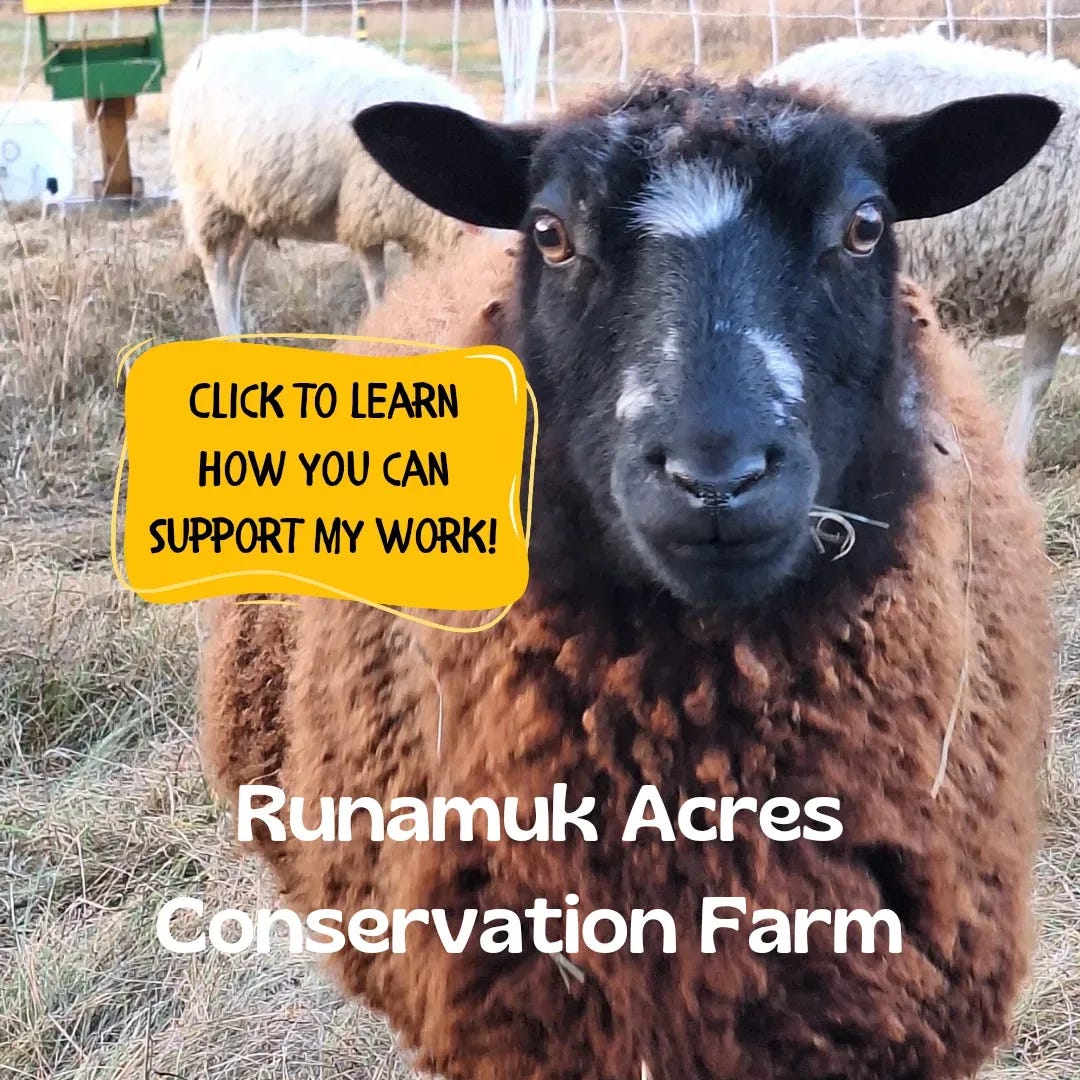
Truly love how this is beautifully written piece.
Thanks Sam, fascinating.